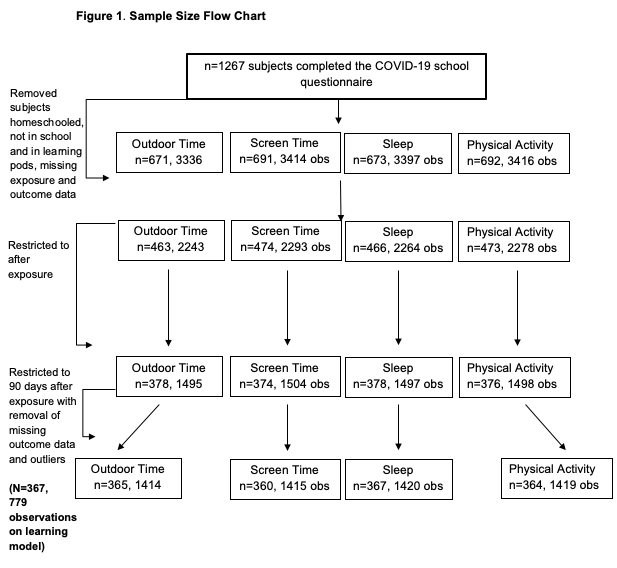Public Health & Prevention
Session: Public Health & Prevention 1
208 - The Association Between Learning Models and Child Health Behaviours During the COVID-19 Pandemic
Saturday, May 4, 2024
3:30 PM - 6:00 PM ET
Poster Number: 208
Publication Number: 208.1616
Publication Number: 208.1616

Monica Prajapati, BSc. (she/her/hers)
MPH in Epidemiology Candidate
Dalla Lana School of Public Health, University of Toronto
Brampton, Ontario, Canada
Presenting Author(s)
Background: School closures, social isolation, and reduced in-person learning during the COVID-19 pandemic may have had a large impact on children’s health. There is limited research investigating the impact of different school learning models on child health behaviours throughout the pandemic.
Objective: To determine the association between school learning models (virtual vs. in-person) and child health behaviours (daily screen time, physical activity, outdoor time, sleep duration, and sleep onset time) during the COVID-19 pandemic, and whether these associations were modified by child’s age, sex, and family income.
Design/Methods: A longitudinal study was conducted in children ages 4 to 13 years enrolled in The Applied Research Group for Kids (TARGet Kids!), a primary care research network in Toronto, Canada, between November 2020 and July 2022. Data on sociodemographic characteristics, child school learning models and health behaviours were collected from repeated parent-reported questionnaires. Unadjusted and adjusted linear mixed-effects models were fit to study learning model-health behaviour associations. Global interaction testing was conducted to examine possible effect modifiers.
Results: A total of 367 children [51% male; mean age 7.3 years] with 799 observations on school learning model (31% virtual learning) were included. Adjusted results showed that compared to in-person learning, virtual learning was associated with higher daily screen time (0.22 hours/day; 95% CI 0.03, 0.40; p = 0.02), higher outdoor time (0.71 hours/day; 95% CI 0.56, 0.86; p < 0.001), higher physical activity (0.64 hours/day; 95% CI 0.44, 0.85; p < 0.001) and a later bedtime (0.22 hours; 95% CI 0.15, 0.28; p < 0.001). Child’s age, sex and family income modified associations between virtual learning and health behaviours as older children had higher daily outdoor time (0.91 hours; 95% CI 0.69, 1.12; p < 0.0001), girls had a later sleep onset time (0.29 hours; 95% CI 0.20, 0.38; p < 0.001) and children with a family income of $150,000 or more reported higher daily physical activity levels (0.85 hours; 95% CI 0.59, 1.11; p < 0.0001).
Conclusion(s): Virtual learning was associated with higher daily screen time, outdoor time, and physical activity and a delayed sleep onset time among school-aged children. Future considerations are warranted on how to reduce overall screen time among children during transitions to virtual learning. This study raises important questions about the adequacy of outdoor and physical activity opportunities for children in school, which should be examined further given the amount of time spent in this setting.


.png)
